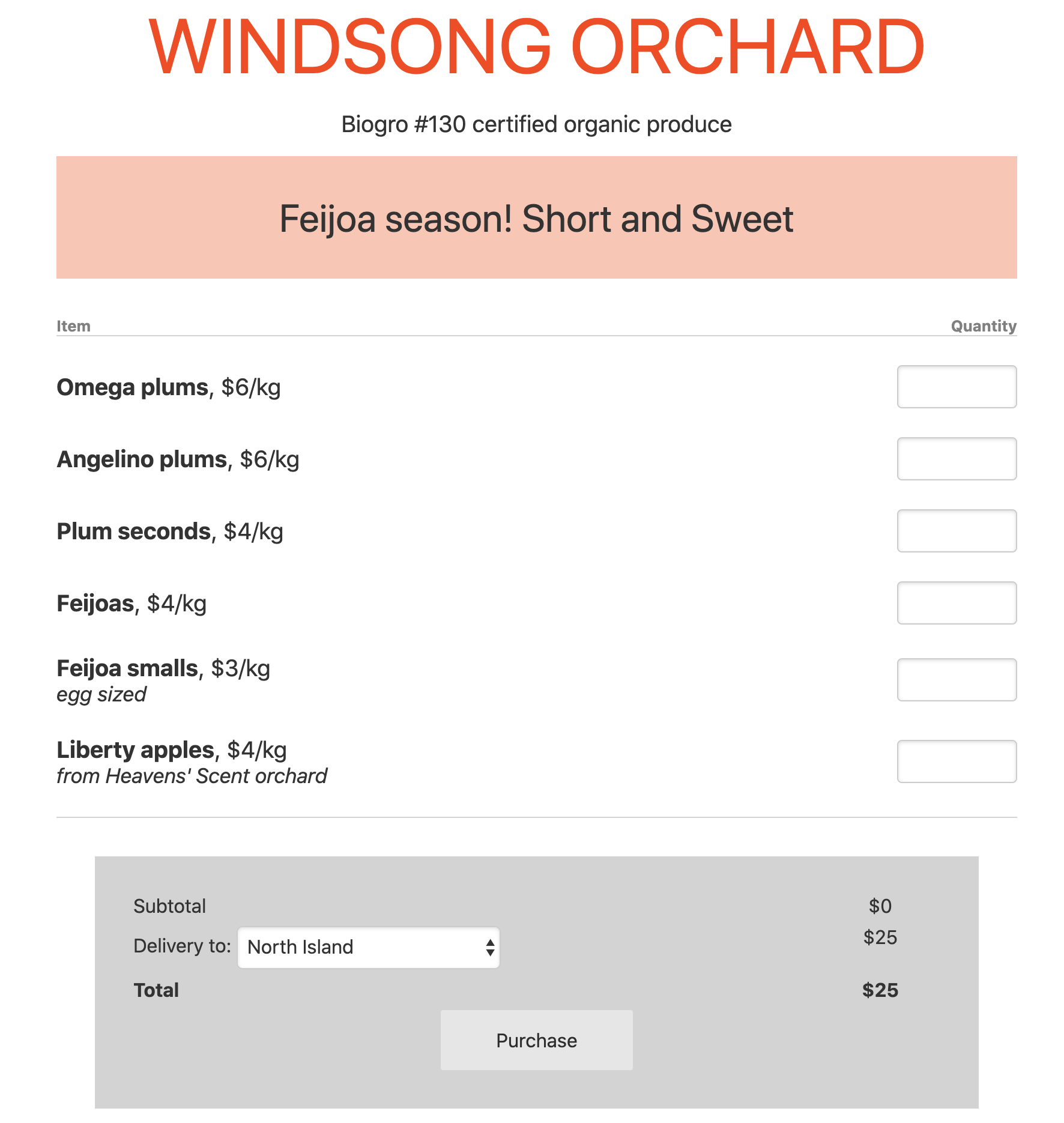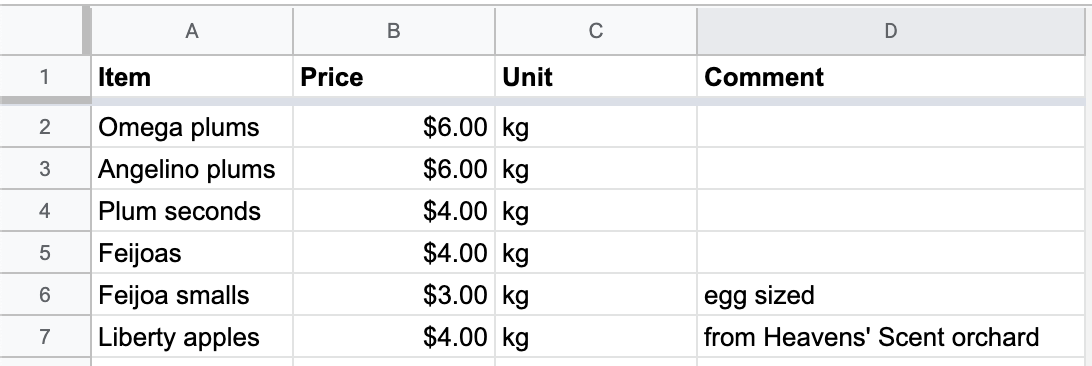For the last few weeks I’ve been in COVID-19 self isolation, and on unpaid leave, so things have been pretty quiet. My parents, on the other hand, own a small orchard and are classed as essential personnel, so they’ve been hard at work picking plums, grading them, packing, and (as the market is closed) hand delivering fruit around the region, and sometimes shipping boxes further afield. A lot of the manual labour is unavoidable but the sales and payments seemed like a lot of wasted work, so I thought I’d try to help with a simple website where customers could order fruit.
My goals were:
- As cheap as possible to run - margins are pretty thin on the orchard and you can only sell during the season so we don’t want regular monthly fees. Plus any small cost and you start running into Squarespace territory.
- As simple as possible to use - for customers, this is a page where they can choose what they want and buy it, no fancy marketing or gloss.
- Flexible enough for other stores - there’s a local grocery store that’s doing delivery during COVID-19 and ordering is a painful process with a PDF to print. It made me think there must be other small shops out there with a need for this.
Here’s what I built, and how:

AWS
Amazon has a bunch of tech to host a website, and to hook you they have a free tier on a bunch of their services. I used AWS Lambda for my backend, S3 and CloudFront to host the frontend, and DynamoDB to store shop configuration and order data - all of which should be free, unless I get some extremely unusual load. The only AWS service that’s not totally free is SES to send notification emails to the store owner when a purchase has been made - and that’s 14c/GB, which is a looot of emails.
I used Serverless Framework to deploy most of this stuff, though the static website is deployed separately, set up with CloudFormation. Initially I felt a little iffy about adding a layer of abstraction but Serverless has a lot of useful plugins and frankly writing CloudFormation is a real pain.
Stripe
Stripe will let you integrate as much as you want with them - hooking deeply into their APIs to handle payments and handling everything else on your end. But they also have something called Stripe Checkout which lets you push as much onto them as possible. My backend gives Stripe a list of items and a price, then I redirect the customer to Stripe which collects shipping address, email, and payment. When the charge has been successfull, Stripe notifies the backend (with the payment and address details) and the customer is redirected back to an order completion page I made. Super easy.
They also have a really nice test data toggle with separate API keys. Testing third party integrations is often a painful experience and this really made it easy.
Google Sheets
Almost the highlight of this project is the use of a single Google Sheet as a CMS.

Crucially, this allows clients to easily manage inventory in an interface they’re already familiar with, and saves me not only from building a UI and backend to manage all this but more importantly removes the need for an admin login which saves us from a whole set of problems. Much easier to use the Google Sheet’s permission system to manage things.
The API is a liiittle slow to respond but it’s a small issue and it would be easy to cache the spreadsheet in DynamoDB if needed. (Actually, if I really wanted to do this right, when the spreadsheet updated I’d trigger a Lambda to generate a static page generated from the spreadsheet…)
What went wrong
The backend is built in NodeJS, but it didn’t actually start that way. I built the entire thing in Kotlin using the Ktor web framework, planning to run it in Fargate, an AWS service that hosts Docker containers - but it turns out Fargate doesn’t have a free plan. AWS Lambda looked nice but as much as I love Kotlin, it runs on the JVM which runs very fast but takes an unusually long time to boot up.
How Lambda works is when an HTTP request comes in from a user, it boots up the service to respond to it, handles the request, and then shuts down the service later - everything is done on the fly. This comes with a lot of advantages but it does mean that if your service takes a while to boot, users will suffer slow response times.
So, I threw out all my Kotlin code and rewrote it in NodeJS, known for fast boot times. I went with Typescript which was a pleasant experience, particularly when querying the Google Sheets API.
Conclusions
- For someone who isn’t a frontend developer, Svelte was a pleasure to work with. I understand its advantages are being responsive and small but I appreciated being able to write actual HTML+CSS+JS and it all working like I expected.
- Google Sheets as a CMS is a highly underrated option! Reading and writing to it is easy and it’s so good not to have to deal with security on your own app. Obviously you wouldn’t want to use it for something huge but there are lots of small sites out there.
- Writing CloudFormation reminds me of the worst parts of programming: googling for a solution, copy pasting code, hoping it works. I can’t imagine ever writing it from scratch and I can see why abstractions like Serverless Framework are popular.
Comments